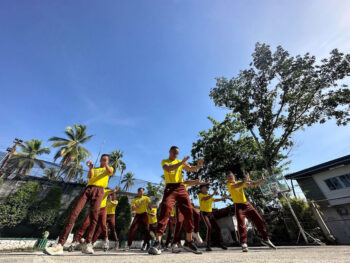GENERAL SANTOS CITY (MindaNews / 12 March) – Fisheries officials are projecting an increase of around 50,000 metric tons (MT) in the country’s annual tuna landings once fishing companies here complete the deployment of their 36-vessel quota into the reopened high seas of the tuna-rich western Pacific Ocean.
Lawyer Asis Perez, Bureau of Fisheries and Aquatic Resources (BFAR) national director, said tuna fishing companies based in this city have already deployed 14 catcher vessels into the Pocket 1 of the western Pacific Ocean’s high seas since it was reopened to Philippines-based fishing vessels in September last year.
“We have 14 vessels operating in the area right now. That (number) would have been 20 already if not for typhoon Pablo,” he said in an interview.
He said six of the tuna catcher vessels that resumed operations in the area last year had went missing and were presumed to have sunk following the onslaught of typhoon “Pablo” off Mindanao’s eastern seaboard last Dec. 4.
A total of 47 fishing vessels owned by tuna fishing companies based in this city went missing at the height of the super typhoon. Eight bodies were recovered while 352 crew members from the area remained missing and were so far presumed dead.
The Western and Central Pacific Fisheries Commission (WCPFC) reopened Pocket 1 of the Pacific high seas to local fishing fleets in September last year following an extended fishing ban that started on Jan. 1, 2010.
Pocket 1 is located in an area of about 590,000 square kilometers north of Papua New Guinea and east of southern Indonesia, which are areas closest to the Philippines and where local purse seine tuna fishing companies operate.
The WCPFC, a treaty-based organization that leads the conservation and management of fish stocks in the Pacific Ocean, initially imposed a two-year fishing ban in Pockets 1 and 2 of the high seas in the western and eastern areas to replenish the dwindling stocks of the highly migratory tuna species.
The ban was imposed on all its 25-member countries and 10 other observer-states as a result of scientific studies and the emergence of statistics that showed the drastic decline of tuna fish stocks, especially bigeye and yellowfin tuna.
Dr. Alma Dickson, chief of BFAR’s Marine Fisheries Development Center, said they were assisting tuna fishing companies in properly complying with the requirements set by the WCPFC for fishing vessels to facilitate their deployment into the reopened high seas.
She said these include the installation of a vessel monitoring system (VMS), deployment of an observer and the use of appropriate net size to prevent catching of juvenile tuna.
The WCPFC earlier set that “purse seine net shall have mesh sizes not less than 3.5 inches starting at the mid-body to the entire wing while ring nets shall have mesh sizes not less than 3.5 inches at both wings.”
Dickson said most fishing companies have been facing difficulty in complying with the fish net requirement due to their high costs.
“A VMS only costs around P180,000 but the nets could cost millions,” she said.
Perez said they were hoping that local tuna fishing companies would be able to fill up their 36-vessel quota within the year.
“Our main consideration in meeting that quota is the additional catch of around 50,000 MT that we will get there. Based on our assessment, each vessel deployed there could produce around 20 tons of tuna on a good day,” he said.
The fishport complex here recorded a total of 244,472 MT in total fish landings last year, about half of which comprised tuna species that were either exported fresh or processed by the six tuna canneries based in the city.
In 2011, the Philippine Fisheries Development Authority (PFDA), which operates the city’s fishport complex, reported a total of 97,013 MT in tuna landings out of the 212,638 MT in total fish landings.
A PFDA report cited that the fishport complex’s total fish landings last year still increased significantly despite the noted drop in commercial fishing vessel arrivals from 15,014 in 2011 to just 13,922 in 2012.
During the first three quarters of 2012, the National Statistics Office (NSO) noted a 128.7-percent increase in the country’s tuna exports (fresh, frozen, prepared or preserved in airtight containers), with total receipts valued at US$ 47.99 million.
Tuna, which generated total receipts of about US$21 million last year, posted the highest annual increase among the country’s top 10 exports, NSO said.
Tuna, which posts average export receipts of US$250 million yearly, remains the biggest export earner for this city and contributes around 50 percent to the area’s economy. (Allen V. Estabillo / MindaNews)







